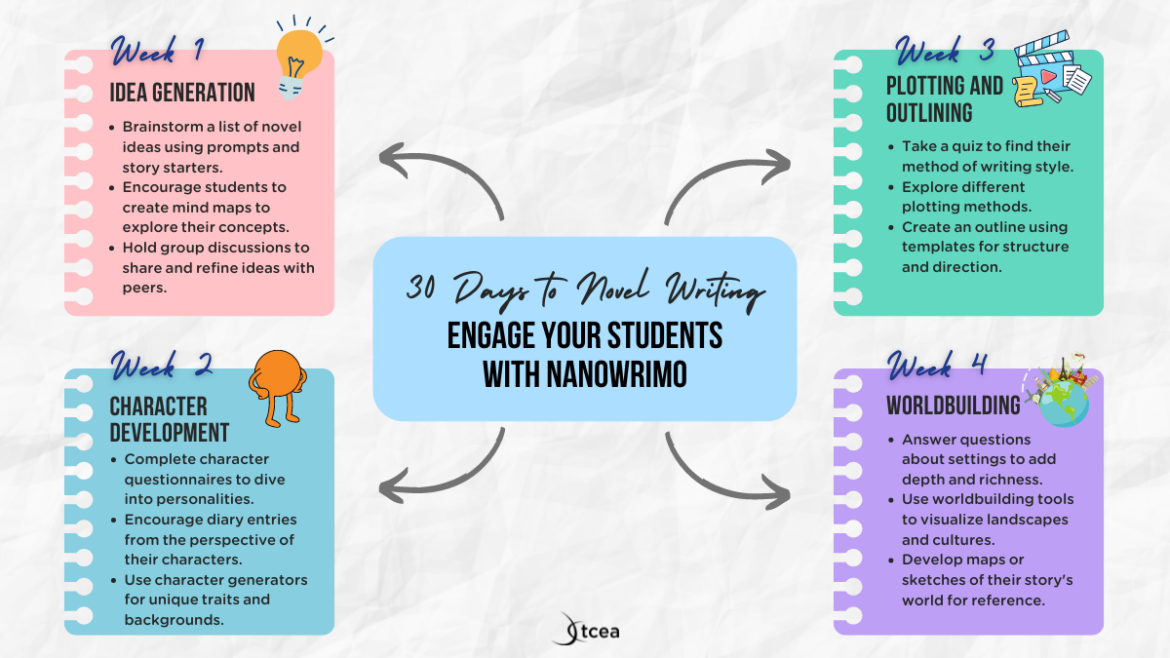Hey everyone! Can you believe November is almost here? That means it’s time for NaNoWriMo (National Novel Writing Month)! This exciting challenge invites writers from all over to crank out 50,000 words in just 30 days. As teachers, you have the perfect opportunity to tap into that creative energy and get your students excited about writing. Let’s explore what NaNoWriMo is all about and share some fun ideas and activities you can do with your students in November or any time of the school year. Sound good? Let’s jump in and see how we can turn your students into Wrimos!
The History of NaNoWriMo
NaNoWriMo, short for National Novel Writing Month, kicked off in July 1999 with just 21 participants in the San Francisco Bay Area. Founded by Chris Baty, the event aimed to encourage creativity and get people writing. The concept was simple: participants would commit to writing a 50,000-word novel in 30 days. The first official NaNoWriMo took place in November 2000, and it quickly gained momentum, attracting thousands of writers from all over the world.
NaNoWriMo officially became a nonprofit organization in 2006, and since then, it has expanded to offer a variety of programs. These include community writing challenges, such as National Novel Writing Month in November and Camp NaNoWriMo in April and July. They also provide resource-driven initiatives like NaNo Prep in September and October, along with the “Now What?” Months in January and February.
Fun Fact: NaNoWriMo has become a beloved online phenomenon fueled by its vibrant community calling themselves Wrimos! Notable authors like Elizabeth Acevedo, Rainbow Rowell, and Marissa Meyer have crafted their novels during this challenge. The website tracks your word count like a Fitbit tracks your steps, and dedicated volunteers organize writing events in cities from Seoul to Milwaukee.
How to Get Your Students to Write 50,000 Words
Whether your students are seasoned writers or just starting their storytelling journey, this challenge is a fantastic opportunity to spark their imaginations and enhance their writing skills. Typically, the process is broken down into four key areas done each week: Idea Generation, Characters, Plotting and Outlining, and Worldbuilding. Below you’ll find activities, tools, and templates that can help them stay motivated, overcome writer’s block, and keep the creativity flowing as they work toward that impressive 50,000-word goal!
Lighting the Fire of Creativity in Writing
Some students may struggle to come up with a novel idea that genuinely excites them, feeling stuck or uninspired. Meanwhile, others are overflowing with ideas but have a hard time settling on just one, overwhelmed by the possibilities. Both situations can create challenges as they embark on their writing journey, highlighting the need for guidance to help them find inspiration and focus their creativity.
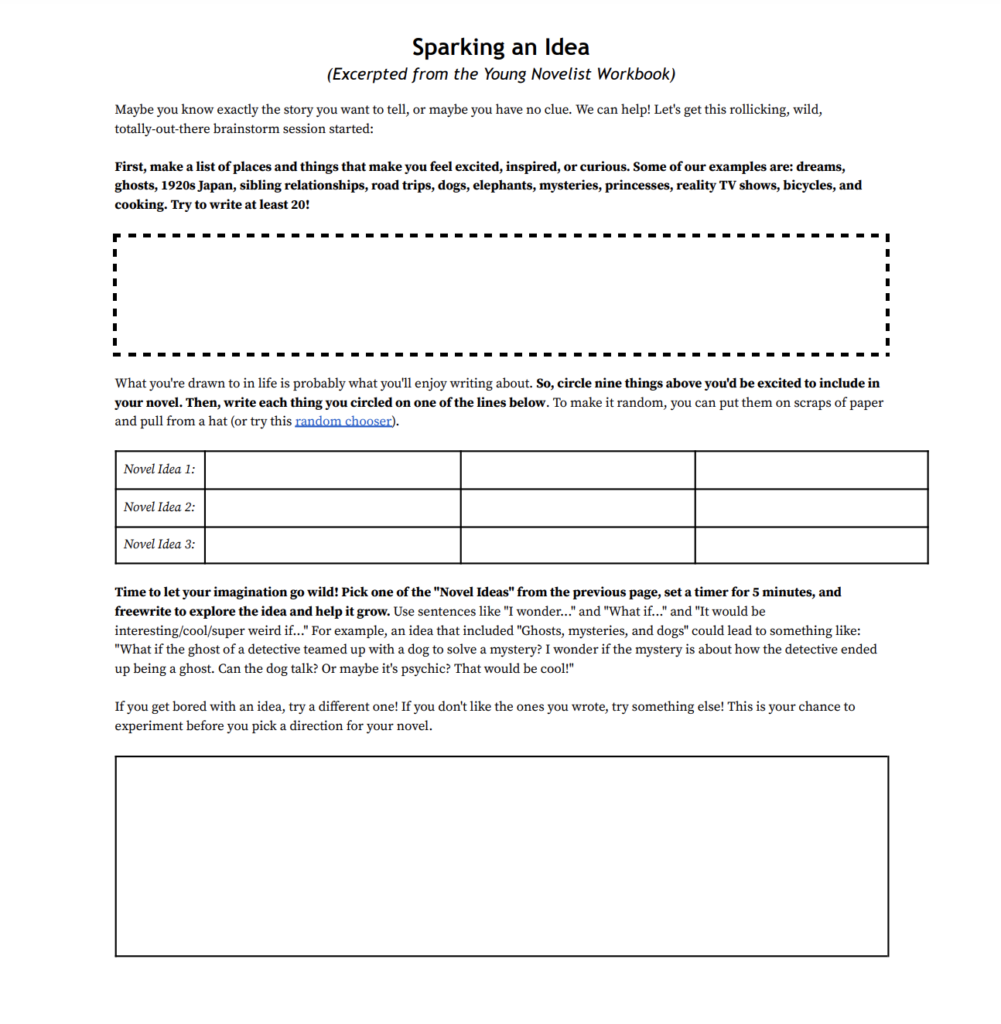
Check out this document from NaNoWriMo that students can use to help spark inspiration. If students are really struggling, try the Four Ways to Develop an Idea activity.
Idea Generating Tools and Templates To Try
Writing Exercises: Random Plot Generator
Crafting Memorable Characters
Characters are often the heartbeat of a story, and a big part of crafting a first draft is really getting to know them. This character questionnaire exercise will help you explore their personalities in depth. Remind your students that there’s no pressure to have every detail nailed down before they start writing. Embracing the surprises that come along the way is one of the most exciting aspects of the first draft!
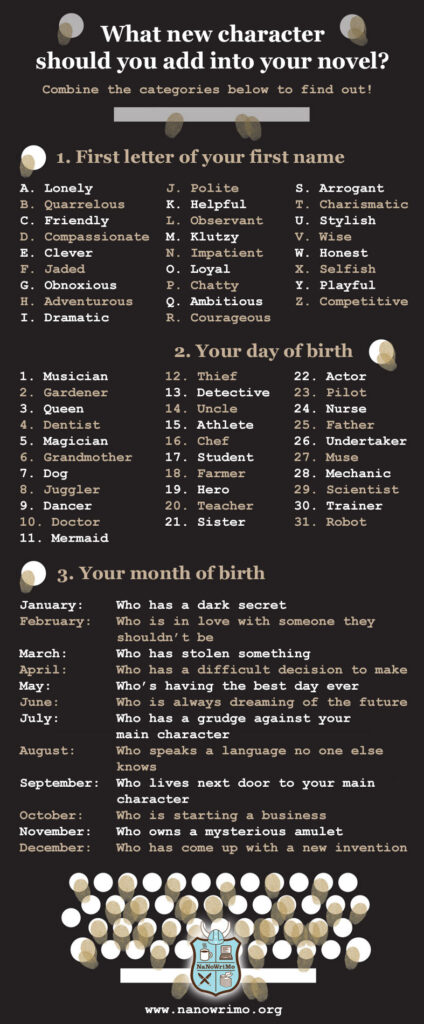
Character Writing Tools and Templates To Try
Writing Exercises: Character Generator
Perchance: AI Character Generator
NaNoWri Mo Character Generator Template
Dabble’s Best Character Template Ever
Building a Plot or Outline

With countless ways to structure a novel, it can feel overwhelming to determine which method will suit your student and their story best. So how do we combat that? Have students take the Are You a Plotter, Pantser, or Plantser? quiz to discover their plotting style.
Encourage your students to explore Campfire Writing’s 16 Ways to Plot a Book: From Circles and Snowflakes to Pyramids and Point Graphs to find the best method that will work for them.
Plotting and Outlining Tools and Templates To Try
ahrefs Free AI Outline Generator
Novel Factory: Character Driven Plot Outline Template
Novel Factory: Universal Novel Plot Outline Template
Creating an Immersive World for Your Characters
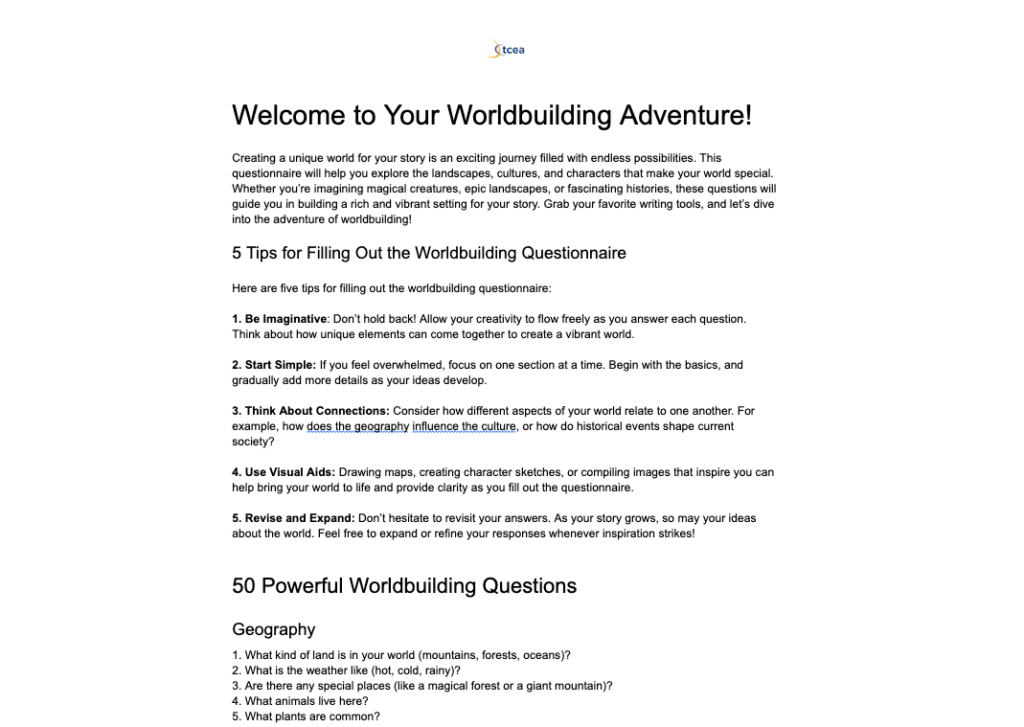
Settings aren’t just a backdrop for a novel; the world your characters live in has a profound effect on the story you create. Use this list of questions (shown above) to help your students craft settings that add real depth and richness to their narratives.
Worldbuilding Tools and Templates To Try
Fantasia Archive: Free, Powerful, Offline Worldbuilding Tool
Campfire Writing: Worldbuilding Tool
Kindlepreneur Worldbuilding Template: 101 Prompts to Build an Immersive World
Novel Factory: The Ultimate World Building Template & Questionnaire
More Student Writing Ideas and Activities
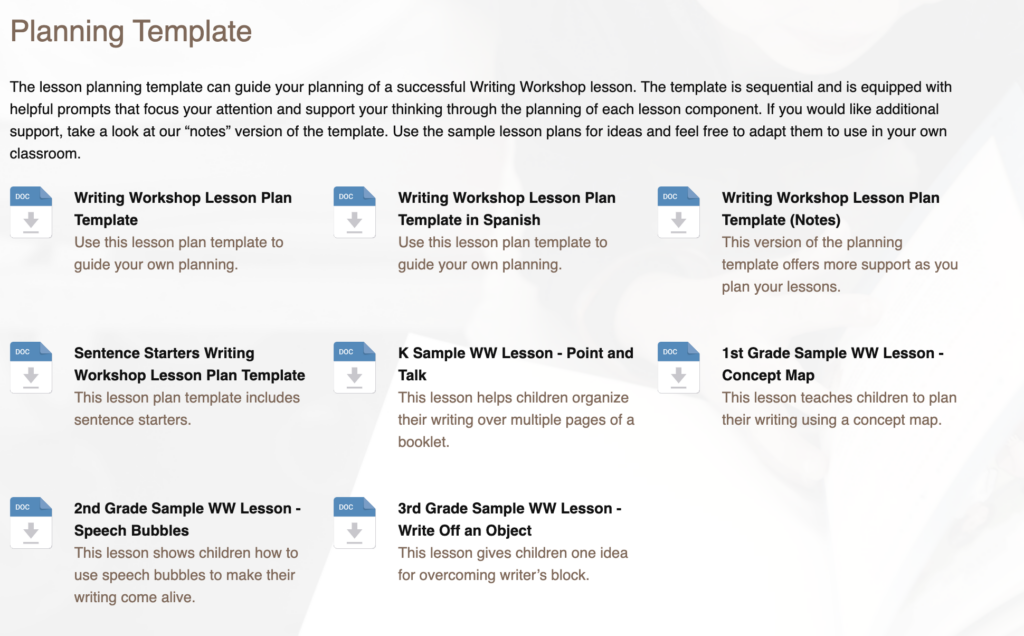
Kickoff a Writing Workshop
Organize a workshop where students can brainstorm ideas, develop characters, and outline their plots. Use writing prompts or “story starters” to help spark creativity. Encourage students to share their ideas in small groups for feedback. Snag TONS of templates for a Writing Workshop from Children’s Literacy Initiative.
Alternate Ending
Ask students to take a well-known story (from books, movies, or fairy tales) and rewrite the ending. Encourage them to think about how different choices could lead to alternate outcomes. This activity allows for creativity while analyzing plot structure and character decisions.
Dialogue-Only Story
Challenge students to write a short story using only dialogue—no narration or description. This exercise encourages them to convey emotion, character dynamics, and plot through conversation alone, honing their skills in crafting authentic dialogue.
Sensory Scene Descriptions
Have writers describe a scene using all five senses (sight, sound, smell, taste, touch). This can be a scene from their own story or an imaginary setting. Focusing on sensory details helps enhance descriptive writing and makes their scenes more immersive.
Character Diary Entries
Have students choose a character from their story or create a new one and write a series of diary entries. These entries can explore the character’s thoughts, feelings, and experiences throughout a significant event in their life. This exercise helps writers delve deeper into character development and motivation.
Engage Your Students with NaNoWriMo!
And there you have it! With NaNoWriMo just around the corner, it’s the perfect time to get your students excited about writing and exploring their creativity. I’d love to hear your thoughts, ideas, or any questions you might have about getting started. What activities are you most excited to try with your students? Let’s share our experiences and help each other turn our classrooms into vibrant writing hubs. Happy writing, everyone!

